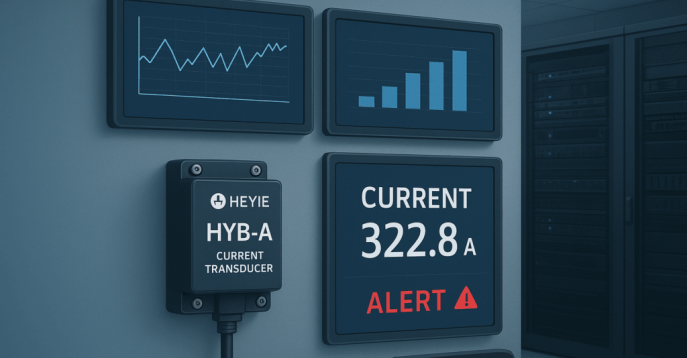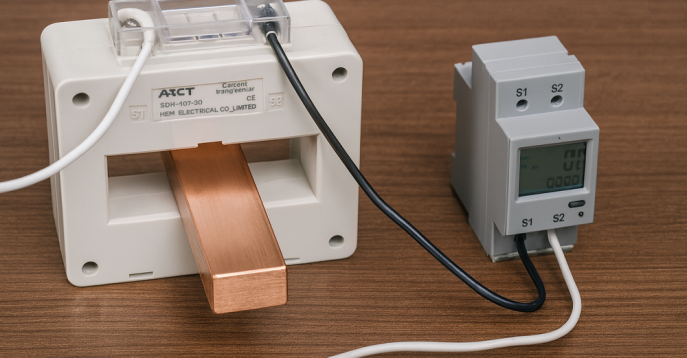News | company news | Dec 09,2024
IoT and development boards: low power current and voltage testing
introduction
The Internet of Things and smart devices are revolutionizing our lives, especially in the industrial and consumer fields. For example, low-power current and voltage testers are widely used in the market.
In recent years, IoT applications have gradually entered the industrial and consumer fields, including water, gas and heat meters, wearable devices, medical electronics, smart homes, remote measurement and control, wireless sensors, etc. These applications have generated a large number of low-power consumption requirements. For example, continuous blood glucose monitors require a battery life of more than 14 days, logistics monitoring locators require a battery life of more than 3 months, smart water meters require a battery life of more than 6 years, and landslide monitors require permanent self-powered battery life. These applications are battery-powered or work through environmental energy harvesting, and require a battery life of months or even years. Therefore, power consumption has become the most critical constraint for such applications.
As the main control device, low-power microcontrollers play a vital role in IoT applications. The technological innovation of their power consumption indicators will promote the rapid development of IoT applications and derive many new product forms and application scenarios.
Application of IoT in Low Power Current and Voltage Tester
The application of IoT in the field of current and voltage testers is becoming more and more widespread. By using advanced sensors and communication protocols, IoT technology can achieve real-time data collection and remote monitoring. For example, by using the MQTT protocol, the tester can transmit data to the cloud in real time, thereby realizing real-time data analysis and fault prediction.
Application of IoT Current and Voltage Tester in Industry
In the Industrial 4.0 environment, IoT current and voltage testers can be seamlessly integrated with other devices (such as PLC, DCS, etc.) to achieve real-time data exchange and analysis. This not only improves production efficiency, but also reduces maintenance costs.
The role of SoC/MCU in low power current and voltage tester
Development boards based on MCU chip integration, especially those based on ARM or RISC-V architecture, provide powerful computing power for current and voltage testers. These development boards are usually equipped with a variety of communication interfaces (such as SPI, I2C, etc.), making communication with other devices more convenient.
Case Study: Using MCU as the Control Unit of Current and Voltage Tester
The core function of Hezhou CC meter is ammeter. In addition to the basic voltage and current measurement functions, CC meter also has many innovative applications:
The Hezhou Power CC meter comes with a 240×240 high-resolution color screen and uses Air32F103 as the main control to achieve rich human-computer interaction on the device side ; it has a built-in USB PD chip and supports PD decoy output. For chargers that support the PPS protocol, it can achieve 20mV voltage step adjustment in the range of 3.3 to 20V.
Can cooperate with PC client to view and analyze current waveform
You can also use the command line version to capture serial port data on any device (win/linux/mac) (such as Raspberry Pi), and use the PC client to import and view it.
The importance of low power design
In IoT applications, low power design is critical. Since IoT devices often need to operate and collect data for long periods of time in remote locations, the endurance of the device is critical. By using a low-power microcontroller and an optimized power management solution, the battery life of the current and voltage tester can be greatly extended.
In addition, low-power microcontrollers are microprocessors that are specifically designed to reduce power consumption. They usually have low-power performance characteristics and efficient energy management features, making them excellent in long-term operation and data acquisition .
The low power consumption design of the microcontroller can extend the use time of the current and voltage tester without the need for frequent charging or battery replacement. In addition, optimized power management solutions are also key to achieving low power consumption.
The power consumption of current and voltage testers can be significantly reduced by adopting effective power management strategies, such as entering sleep mode when the device is not working or reducing energy consumption by dynamically adjusting the operating frequency and voltage of the processor. This optimization not only reduces operating costs but also reduces environmental impact.
Therefore, low-power design is a key technology in IoT applications, which can not only extend the service life of devices, but also reduce operating costs and promote sustainable environmental development.
--- END ---

Oct 21, 2025
An important component of data center power monitoring : HEYI Electric HYB-A1 4-20mA current transmitter Why data centers cannot do without current transmitters In the digital information age , data centers are the core of the Internet . We not only need excellent server performance, low network latency , and huge storage capacity, but we… Continue reading Why is 4-20mA current transmitter suitable for data centers

Oct 18, 2025
Battery current sensor from HEYI Electric – Providing Safer Protection for Clean Energy Why clean energy systems cannot do without leakage detection Carbon neutrality is the common goal of the earth. In an era when clean energy is becoming increasingly popular – from electric vehicle charging stations to photovoltaic power generation systems and energy storage… Continue reading How battery current sensor serve clean energy

Oct 09, 2025
HEYI Electric’s SDH Window-type CT : a universal player for European and American projects Two frequency options : 50Hz /60Hz for Europe and 60Hz for North America. One set of assembly design is universally applicable worldwide , so there is no need to distinguish two sets of product numbers for cross-border and cross- regional projects… Continue reading Window-type CT suitable for EURO and US projects